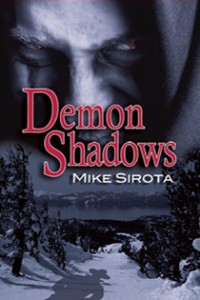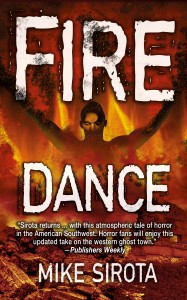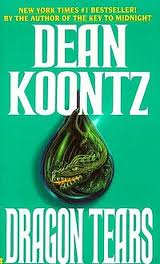In Part One of this series I wrote about how important—how necessary—it is for writers to engage their readers immediately with an element of the story called the narrative hook. Both literary agents and, ultimately, readers want to get into your story quickly, or you risk losing them. Remember the Agents’ Mantra:
“I read the first sentence. If I like it, I read the first paragraph. If I like that, I read the first page. If that works for me, I turn the page.”
Yeah, you’re probably still shaking your head over that one, but it’s true. So in Part Two let’s look at what a hook is comprised of, as well as some highly effective first-line “zingers.”
HOOK 101
 An opening hook, be it the first sentence, first paragraph, or first page will contain at least one or more elements that all of you are familiar with from grade school, namely the five W’s and the H. To wit:
An opening hook, be it the first sentence, first paragraph, or first page will contain at least one or more elements that all of you are familiar with from grade school, namely the five W’s and the H. To wit:
WHO is the character? WHAT is the situation? WHERE is the story taking place? WHEN is it taking place? WHY is this happening? HOW did it happen?
As an example, here is the first line of my novel, Demon Shadows—and it’s not even a complete sentence:
Excerpts from John Thorburn’s diary, 1845-46, published in Trails of Promise—The Way to California:
WHO? John Thorburn. WHEN? 1845-46. WHERE? Somewhere on the way to California.
The subsequent diary entry, a brief paragraph, actually covers the other three elements. And the odd thing is, I wrote this novel before I ever thought to concern myself with what constitutes a hook. Most of this is a given.
Now, what do you want your hook to do? One of two primary things: first, you want to create strong curiosity on the part of the reader about what is going to happen in your story. Second, you want to pose a question that needs to be answered.
A rudimentary example of curiosity: your chapter one (or prologue) characters are in some remote, exotic setting—jungle, desert, mountains, whatever—and are obsessed with digging for something. They finally unearth a large crate, or a sarcophagus, or the sealed opening of a mine (pick one). The leader pries it open, and their anticipation turns to expressions of horror as one of them cries, “Oh dear God, NO!” End of chapter. Curious, we read on.
 Second, posing a question: a deranged scientist has built a device so small that he can hold it in one hand. He plants the device in a remote town or village, population under a hundred people, retreats quite a distance, and activates the thing. An explosion of nuclear magnitude takes out the entire populace, as well as the surrounding area for a couple of miles in all directions. Oh boy, success, and at chapter’s end the nut job is overjoyed at the havoc he will cause in big cities. The question posed: Who is going to stop this guy? We read on.
Second, posing a question: a deranged scientist has built a device so small that he can hold it in one hand. He plants the device in a remote town or village, population under a hundred people, retreats quite a distance, and activates the thing. An explosion of nuclear magnitude takes out the entire populace, as well as the surrounding area for a couple of miles in all directions. Oh boy, success, and at chapter’s end the nut job is overjoyed at the havoc he will cause in big cities. The question posed: Who is going to stop this guy? We read on.
So in order to perform these tasks your hook must EXCITE and ENGAGE the reader in one (or more) of a number of ways.
- It should offer a compelling event (or events).
- It should offer an unusual character—eccentric, scary, funny, you name it. Lots of options.
- It should offer a vivid setting. (In Demon Shadows I used the Sierra Nevada Mountains in late fall and winter, in Fire Dance the searing Anza-Borrego Desert.)
- It should offer powerful prose. Some people just write stronger than others, and their words alone can make readers turn the pages. To see what I mean, read the first couple paragraphs of John Steinbeck’s Of Mice and Men.
“ZINGERS”
 In Part Three I plan to take apart some opening hooks and show you how a lot of the above apply. But for now, let’s talk about “zingers,” my term for opening lines of novels that just seem to jump off the page. I’ll start with, arguably, my favorite “zinger.” It’s from an early novel of Robert McCammon titled, Gone South:
In Part Three I plan to take apart some opening hooks and show you how a lot of the above apply. But for now, let’s talk about “zingers,” my term for opening lines of novels that just seem to jump off the page. I’ll start with, arguably, my favorite “zinger.” It’s from an early novel of Robert McCammon titled, Gone South:
It was hell’s season, and the air smelled of burning children.
Wow, that one sticks with you. But does it have anything to do with the story? In this case the POV character is a Vietnam veteran with PTSD, mostly because of having witnessed a My Lai type massacre in which bodies, including children, were burned. What triggers this on page one is the character driving down a street in Shreveport and catching a whiff of the smells emanating from the vents of a barbecue restaurant. Brilliant—McCammon paid off on his hook, something I’ve seen many writers ignore. They write a catchy zinger to grab a reader’s attention and then go on to tell their story, which has nothing to do with the first line. That is a no-no.
How about this next line? You might guess the author from just reading it:
The decision to bomb the office of the radical Jew lawyer was reached with relative ease.
Yes, it’s John Grisham, first line of The Chamber. So casual, almost a throwaway line, yet it punches you in the gut.
 Or how about: Tuesday was a fine California day, full of sunshine and promise, until Harry Lyon had to shoot someone at lunch.
Or how about: Tuesday was a fine California day, full of sunshine and promise, until Harry Lyon had to shoot someone at lunch.
That line, from Dean Koontz’s Dragon Tears, always draws some laughs from my workshop attendees, though I doubt if Harry’s victim thought it was funny.
Anyway, there are a million of ’em, so feel free to share any that you feel are memorable. Remember the key point, that you must PAY OFF on your opening hook. And while “zingers” can be fun and effective, you don’t always have to come up with that perfect one-liner. Just give us a sentence interesting enough to make us want to read the next sentence, and the next paragraph, and…well, you know the drill.
In Part Three, in addition to dissecting some opening hooks, I will also illustrate how I create the mindset for my writers to come up with their own unique, compelling hooks.

One I always remember from Tom Clancy’s “Patriot Games”, “Jack Ryan was almost killed three times within the first fifteen minutes of his day.” That may not be spot on – it’s been too many years…but you get the idea. One Mark Clements always uses is, “They needed the apartment, so they had to kill the old lady.”
Good ones, Indy!